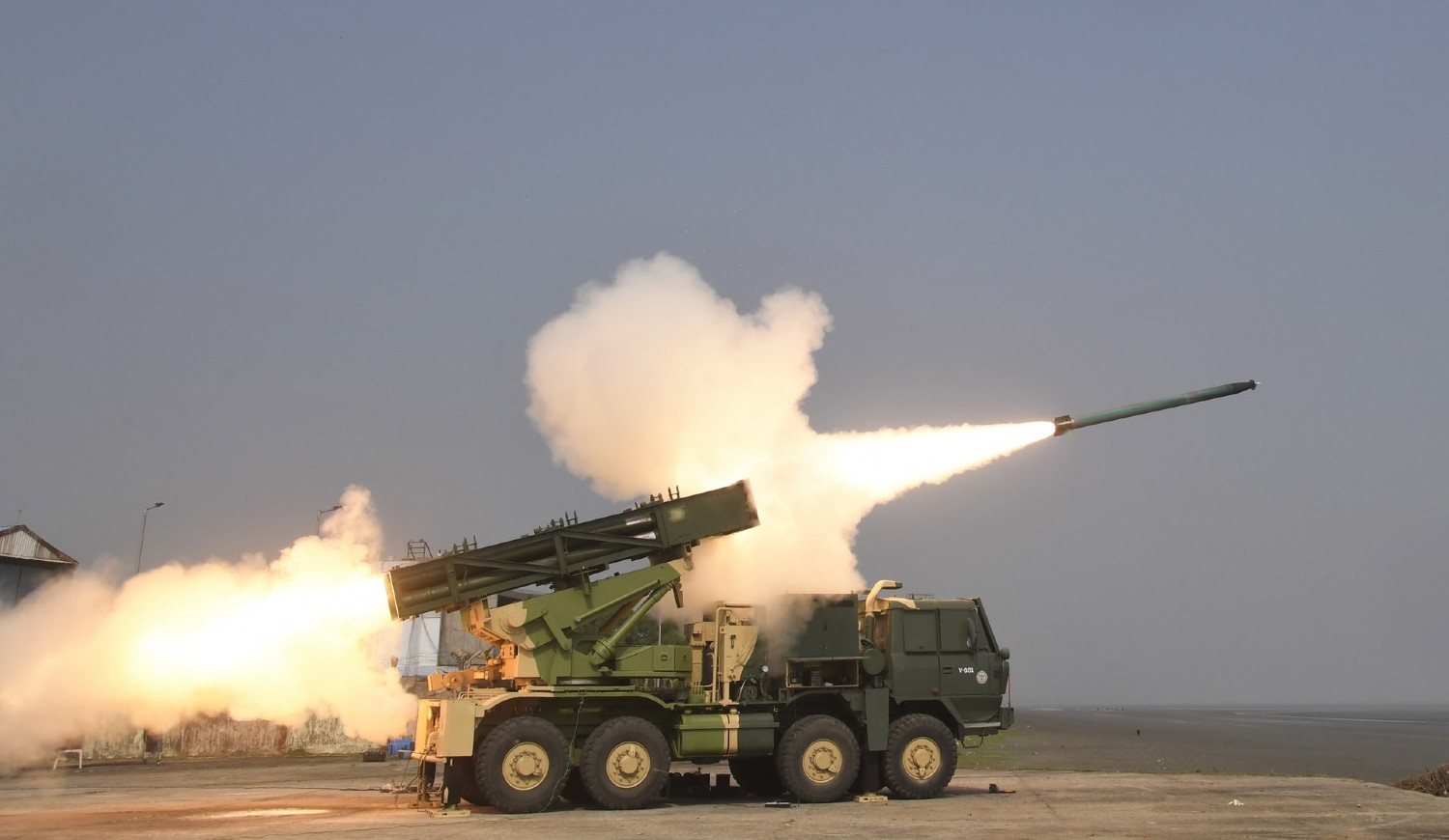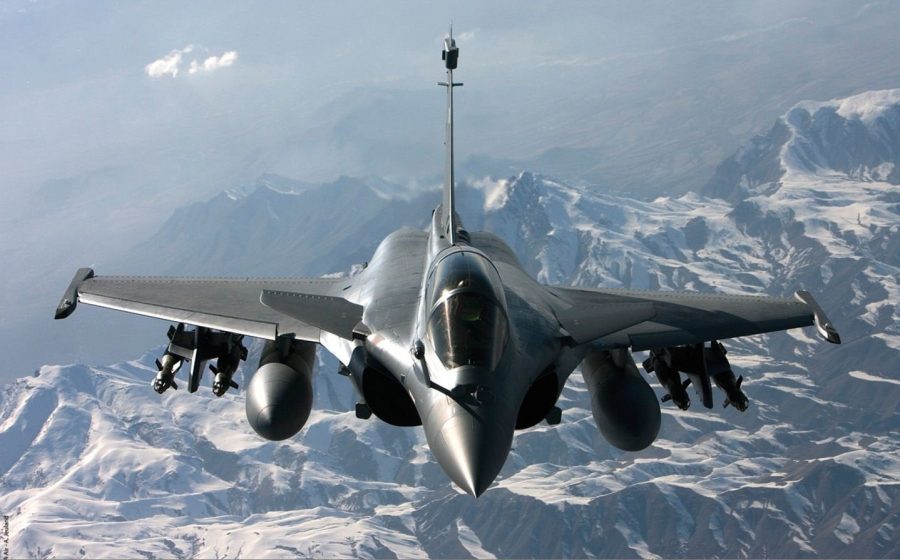Pinaka has been India’s first major export. Armenia chose the Pinaka Multi-Barrel Rocket Launcher System (MBRLS), considered at par with American HIMARS, to bulwark its defense against Azerbaijan. Now, France is evaluating the system for its land forces.
French Army’s Brigadier General Stephane Richou, on a visit to India, revealed this.
“We are evaluating Pinaka because we need a system like that and evaluating this among the other systems of the highest countries… This is much more than a business partnership, this is cooperation,” Brigadier Richou told an Indian news agency.
Underscoring that India and France are strategic partners, the visiting two-star French Army officer said that the two countries are already “sharing equipment” like Rafale fighter jets and Scorpene submarines.
“For us, the industry of Indian defense is very effective. We are looking at the capacities offered by India as much as we are looking at the capacities of the highest countries providing equipment,” Brigadier Richou added.
At the beginning of 2024, during a visit by French President Emmanuel Macron, the two countries finalized a deal to work together on the joint production of defense equipment, including helicopters and submarines for the Indian armed forces and production for friendly countries.
The two countries decided to set up maintenance, repair, and overhaul services by France’s Safran for leading-edge aviation propulsion (LEAP) engines in India and add such services for Rafale engines, and a helicopter partnership.
India’s Tata Group and France’s Airbus have also signed an agreement to manufacture civilian helicopters together.

Pinaka – The Bow Of Lord Shiva
The Pinaka was delivered to Armenia via Iran in 2023.
Pinaka Mk-1 is a free-flight artillery rocket area bombardment system with a range of 38 kilometers, quick reaction time, and a high rate of fire. A single Pinaka system fires 12 rockets from a multi-barrel launcher in 44 seconds, while a battery can fire 72 rockets.
India developed the Pinaka system as a replacement for the Russian GRAD BM-21. For an MBRLS to survive in a drone-saturated battlefield, it must be able to shoot and then disappear quickly. The Pinaka Mk-1 has precisely that ability.
The launcher’s Shoot-and-Scoot capability enables it to escape the counter-battery fire. Pinaka support vehicles share matching mobility and logistics similarities.
The Pinaka MBRLS export contract with Armenia was the export contract of the first genuinely indigenous system by the Indian Defense Research and Development Organisation (DRDO) with near zero import content.
The multiple rocket launcher is already in service with the Indian Army and has been deployed along the borders with China and Pakistan.
The Pinaka rocket system, named after Lord Shiva’s divine bow, gained its first combat experience in the 1999 Kargil conflict against Pakistan. The battles in the frigid Himalayan mountain ranges saw Pinaka neutralize Pakistani positions on mountain tops.
“The best feature of the Pinaka system is that one regiment can launch as many as 12 rockets in under a minute in multiple directions, and then the regiment can be re-located within minutes,” an official familiar with the system told the EurAsian Times.
Donald TRUMPS! Iran’s “Worst Nightmare” Is Back In Power! Why Should Tehran Be Concerned?
The best part is that each launcher can be operated independently. Rockets can be fired individually or simultaneously in different directions. The launcher can operate in four modes: manual, remote, standalone, and autonomous.
The complete Pinaka MBRL system consists of six launcher vehicles, each equipped with 12 rockets, six loader-replenishment vehicles, two command post vehicles integrated with a fire control computer, and a DIGICORA MET radar.
The DRDO is undertaking an enhanced version of the rocket system with an increased range between 60 and 90 kilometers. In addition to the enhanced version, the DRDO has also been testing a guided version of Pinaka with a range between 70 and 90 kilometers.
Burgeoning Indo-French Ties
France is India’s second biggest defense supplier after Russia, and it does not forget to remind India that it has been steadfast in its defense ties with India.
“We have stood by your side through thick and thin,” Safran’s chair, Ross McInnes, assured an audience at India’s Defence Conclave at the beginning of October. “The same cannot be said of your other Western partners,” he added, noting that France was the only Western country that stood with India after the US-led sanctions in the aftermath of 1998 nuclear tests sought to cripple its economy.
Over the past decade, France has become India’s largest arms supplier after Russia. After the Ukraine war, New Delhi is finding it difficult to obtain arms from Russia due to sanctions. This is likely to further boost arms trade between India and France.
Between 2017 and 2021, India was France’s top buyer of arms, purchasing 29 percent of exports.

The surge in India’s imports from France is bolstering Paris’ standing in the global arms market. France is now challenging Russia for the title of the second-largest arms exporter globally, while the United States is still in first place.
The French omni-role fighter jet Rafale had struggled to find a buyer for a long time. Apart from the measly orders from Egypt and Qatar, Rafale’s order book had nothing to boast about. Rafale, which means “gust of wind” in French, failed to win contracts from Belgium, Brazil, Canada, Finland, Kuwait, Singapore, and Switzerland. Its high price tag was a major deciding factor against it.
When the Indian Air Force (IAF), the fourth largest in the world, chose Rafale over Eurofighter Typhoons in 2012, it caused a windfall of orders for the French combat jets. Since then, the UAE has signed a historic deal for 80 Rafales.
India purchased Rafales through a government-to-government deal with France. The French fighters entered the Indian Air Force’s inventory just a few days after the country had a major border standoff with China. Within a week of their arrival, the jets were deployed in Ladakh, where the Indian Army was involved in a major skirmish with the PLA.




